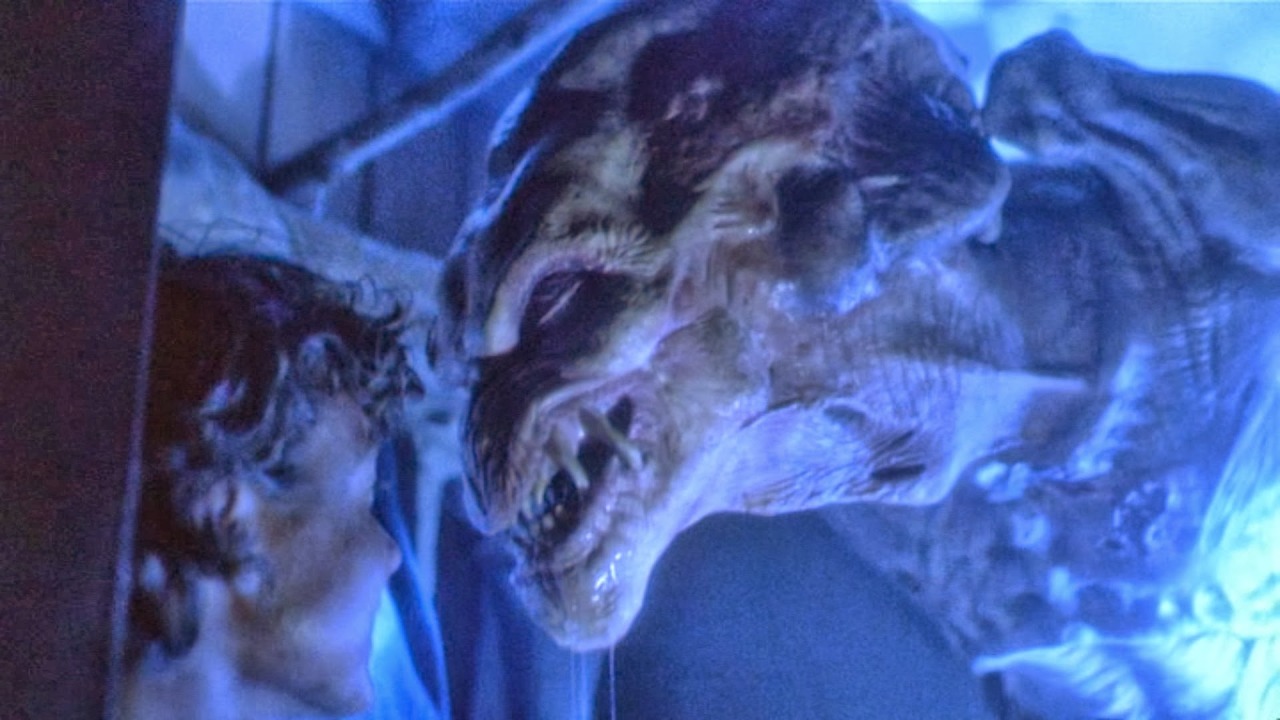
PUMPKINHEAD is my favorite monster movie of all time, and not only because it has one of the greatest, scariest most imaginative creatures ever put on film. It’s a parable, a deep south fairy tale about grief and immediate emotions that come out of that. The film follows Ed Harley and his son, Billy. Harley runs a local grocery store, likely the only one around for miles, in a rural backwoods community. A group of city kids on their way to a cabin for the weekend accidentally run over and kill his son, so Harley pays a visit to a local witch who lives deeper in the woods than most people dare to go.
The witch Haggis is a local legend, but there’s no doubt to anyone—at least not the adults—about what she can do. She has the power to conjure a demon, a personification of vengeance, to seek bloody justice. As the demon Pumpkinhead hunts the city kids one by one, Harley sees and feels everything that the monster is inflicting upon its victims, and realizes the price he’s forcing them to pay for a horrible accident, and confront the terrible thing he’s let loose.
The most fascinating thing about PUMPKINHEAD, to me, is the depiction of the monster itself. The demon is a personification of Harley’s own rage and grief. But we’re not talking about grief after a funeral, after a few weeks or months of mourning. We are talking about a man losing his son and everything he is feeling that very same day. Pumpkinhead is not a machine, taking one person down and moving onto the next without a second thought. Pumpkinhead takes a very clear glee, a genuine delight, in the torment of its victims. It teases a Christian girl by carving a cross into her head. It presses her face against the window of the cabin to taunt the others. It absolutely relishes in what it is doing. And that implies that in that grief and rage, removed from all other human thought and emotion, there is a genuine joy in seeing someone suffer as you have suffered, and that is terrifying.
PUMPKINHEAD is absolutely everything you want from a late night creature feature, but it is also so much more than that. It’s a fairy tale and a harrowing drama in which Lance Henriksen gives the greatest performance of his career. It’s emotionally raw and yet so stylized, with astonishing production design for its budget. It’s a remarkable directing debut for the late master of special effects, Stan Winston, and I wish it had been the first of many.